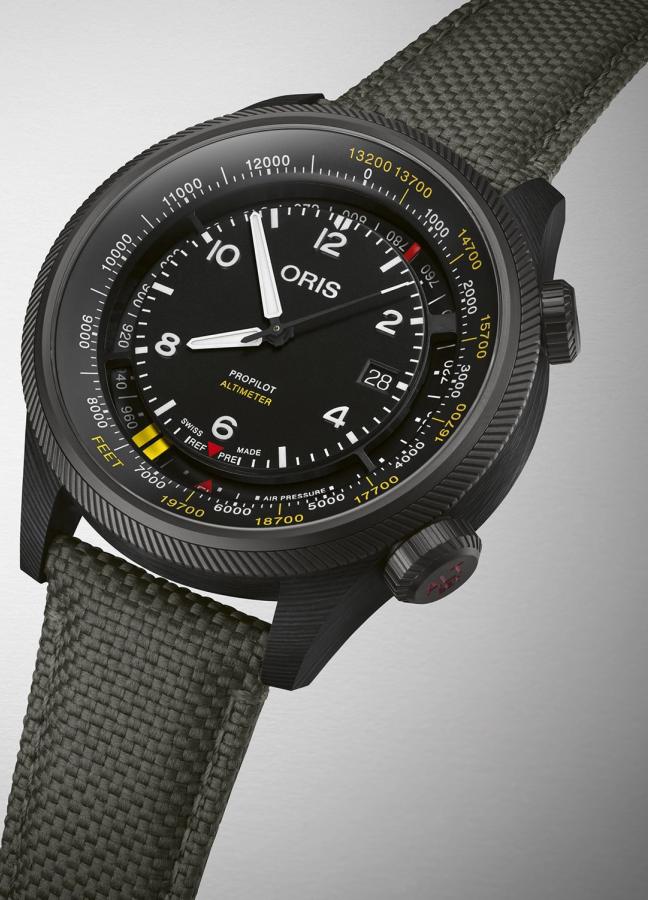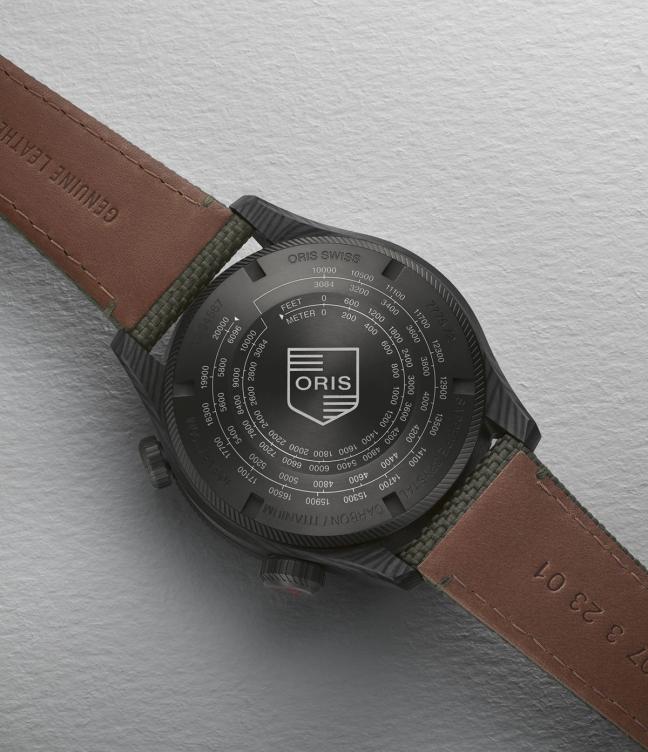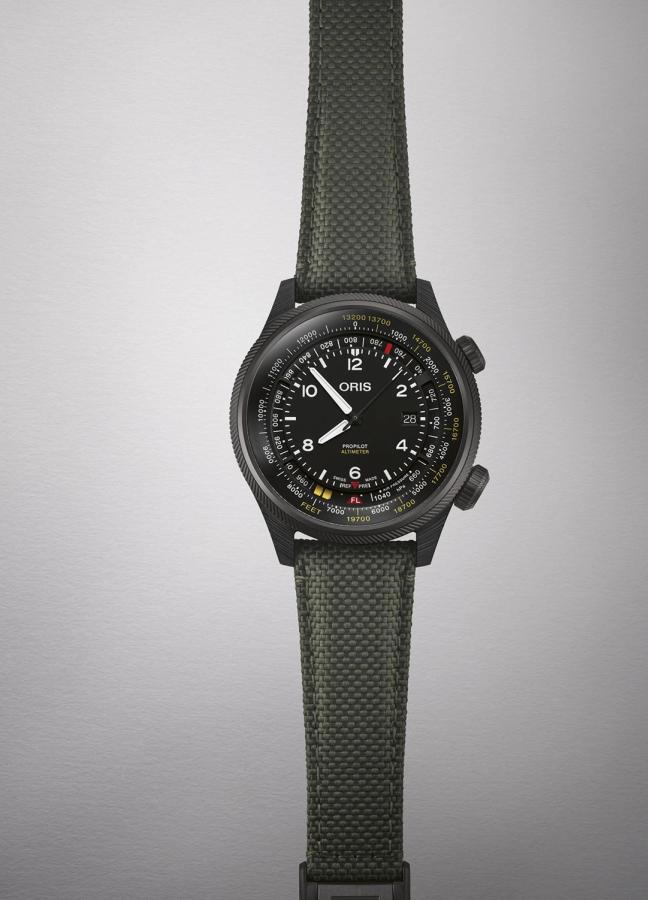Since 1904, Oris has specialised in creating high-functioning watches with a practical, everyday edge. Winding its wares to life in Hölstein, this horological leader has developed more than 280 unique calibres and countless watches during its time, most with state-of-the-art — but easy-to-use — complications.
In 1938, the watchmaker introduced its first watch for pilots, with a distinguishing big crown and a ‘Pointer Calendar’ function. In 1970, Oris launched the ‘Chronoris’, the company’s first and now-iconic chronograph. And, in 1997, the brand unveiled its ‘Worldtimer’, a watch with a function that adjusts time forwards or backwards in one-hour jumps.
By 2014, the watch community’s collective eyes were once again on Oris — waiting for the next innovation. And so the Swiss brand became the world’s first to introduce a watch that combined an automatic mechanical movement with a mechanical altimeter. This year, that innovative ‘ProPilot Altimeter’ is back — with a slew of upgrades including a slimmer profile and more lightweight case.

This retuning and refining has taken three years, but the new ProPilot has an improved altimeter — a mechanism that uses an airtight box, filled with thinned air, to measure altitude. When the atmospheric pressure fluctuates, the air inflates or deflates, and gives an accurate indication of how high you are above sea level (or below; the new ProPilot is water-resistant to 100 metres).
The new model’s altimeter module is also now capable of indicating altitude of up to 6,000 metres — whereas the previous model topped out 4,500 metres. It can be set by pulling out the watch’s lower crown and rotating it to a reference air pressure (supplied, for example, by an airport control tower). Changes in altitude will then be indicated by a yellow index, measured against the outer dial ring.


The case itself has also been upgraded. Hewn from lightweight carbon fibre, it’s a sturdy shell produced using a process developed and perfected by one of the watchmaker’s pioneering partners; 9T Labs. An offshoot of the prestigious ETH Zurich University (Swiss Federal Institute of Technology), the institution created a carbon composite two thirds lighter than titanium, through a process called ‘additive manufacturing and moulding’ — similar to normal 3D-printing, but typically used for prototyping.
The case is also one millimetre thinner than the original, and thus can house ‘Calibre 793’, a slimline automatic movement with an improved 56-hour power reserve. Functions including a stop second device and quick-setting date can be read on the watch’s black dial — where all the indices, numbers and hands are printed with Super-LumiNova.

Flip the watch over, and you’ll see the same altitude scale etched into the grey PVD-plated titanium caseback. And, paired with a hardy green textile strap, lined with brown leather, everything about Oris’ latest is as capable as it is cutting-edge.
But that’s only to be expected from the watchmaker. After all, with so many years of utilitarian, ergonomic experience under their buckles (a titanium folding clasp, in this latest case), we’ve come to expect nothing but the best, increasingly workable tool watches from the innovators. New heights — in every sense of the phrase.
Want more pioneering timepieces? New from Ressence, the ‘Type 1° Round’ ticks in time with your senses…
Become a Gentleman’s Journal member. Find out more here.

Become a Gentleman’s Journal Member?
Like the Gentleman’s Journal? Why not join the Clubhouse, a special kind of private club where members receive offers and experiences from hand-picked, premium brands. You will also receive invites to exclusive events, the quarterly print magazine delivered directly to your door and your own membership card.


